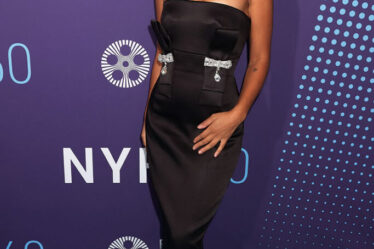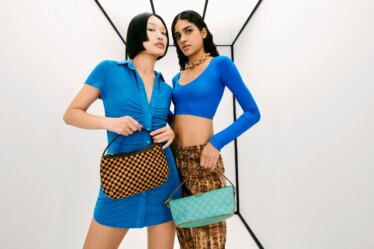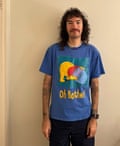
“The best kind of T-shirt is the type you had as a kid at school, that starts off feeling like a cardboard box, but 10 years later you’re still wearing it because it has softened without stretching out of shape,” says Susan Dimasi, the designer and founder of Material By Product.
That’s the kind of T-shirt I dream about. One that I’ve had for years, that still fits but the fabric is worn and draped so it looks, well, cool. Dimasi says to achieve this, a T-shirt has to be made with a high-quality dense cotton and have properly constructed seams.
Since T-shirts are a stretch item that you pull over your head numerous times, the key is a thick seam that runs along the back of your neck from shoulder to shoulder. This will stop the neckline of your T-shirt from sagging and gaping across the shoulders and sleeves. The seam should be reinforced with a cover stitch and be so thick it looks as though another piece of material has been sewn over the top of it.
But T-shirts this thoroughly constructed are getting harder to find. Here, four fashion insiders recommend their favourite T-shirts.
Secondhand softness
Wiradjuri photographer Kyle Archie Knight has been buying his T-shirts from op-shops for the last five years. “The T-shirts they have are better quality than most [sold today],” he says. Plus, they have a nice, softer feel that is hard to find with new T-shirts.
Knight looks for good-quality cotton, mock necklines and graphics that might be camp and humorous or nostalgic. “My favourite at the moment is a dark blue T-shirt with a Winnie-the-Pooh graphic that reads: ‘Oh bother!’”
“There’s a sense of comradeship I get from purchasing and wearing secondhand clothes,” he says. “Someone before me wore and loved them, and instead of contributing to landfill, they gave the clothes a second chance to be loved by someone else.”
Combining words with action
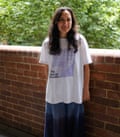
The Social Studio CEO Dewi Cooke loves a merch tee with something to say. “I’m particularly interested not just in the message, but where a T-shirt is made and what it’s made of,” she says.
Her favourite T-shirt is from her own social enterprise, made in Collingwood from organic cotton that is also knitted in Melbourne. “Investing in communities through what you wear is something I’ve embraced more as the years go by,” she says. “If you can make a difference, however small, why wouldn’t you?”
She also loves T-shirts made by Music in Exile who support culturally and linguistically diverse artists in the music industry, the embroidered pieces from Palestinian slow fashion brand Nol Collective and the long-sleeved tees from LA-manufactured brand Kids of Immigrants.
Simple but perfect

Adam Worling is obsessed with the perfect white tee. “I love that a white T-shirt is as classic as a pair of jeans – and gosh do they go together well,” he says.
The City of Sydney councillor and PR director has tried T-shirts from a range of price points, from a $300 tee by James Perse to much more accessibly priced Bonds tees, which come in packs of two for about $29.
These experiments led him to a white T-shirt he truly loves. It is by Bassike and retails for a middle ground price of $110. He loves it because the cotton is certified organic and grown without pesticides, the cut is loose but not too roomy, the fabric is not too sheer, it washes well and lasts a long time. He says: “These T-shirts are so Aussie – they look great and require minimal effort to look after.”
A tee that ages like fine wine
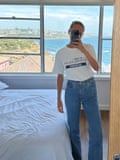
Felicity Brand’s favourite T-shirt is five years old. “It’s one of the most treasured pieces in my wardrobe,” says the head of buying at boutique Mode Sportif.
Like a lot of good T-shirts, it has sentimental value. It was the first gift she received from her fiance and the logo is distinctive. It’s from French designer Jacquemus’ spring/summer 2018 collection, which Brand says means its value will increase over time, as the print wears and takes on a vintage look.
It’s also well-made, with a reinforced neckline, relaxed fit and is 100% cotton. She says it fits well with her “less is more” approach to getting dressed, because it “can stand the test of time and not end up in landfill”.

